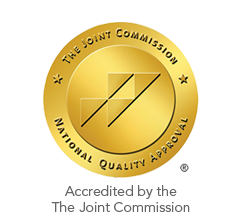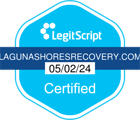We all know or have at least heard about someone who was addicted to drugs or alcohol. Substance use disorders, alcohol use disorders, and mental health issues are growing at an alarming rate year by year. Almost every day there are stories of people who suffered an overdose or succumbed to their addictions in various ways. But thanks to the efforts of people like you, as well as medical professionals, therapists, and community members, the death toll as a whole has a chance to degrade in the future.
Every September is deemed Recovery Awareness Month. These 30 days are where we support and encourage our loved ones and community members who are struggling with addiction and help them access the best substance abuse resources and addiction treatment available. This month also highlights the importance of having a solid and stable network of recovery services and providers, as well as a compassionate and empathetic community of people who have overcome addiction.
Recovery awareness month will continue to advocate and support new and effective ways of treating and recovering from addiction. It will keep educating others about the challenges and solutions related to co-occurring disorders (anxiety, depression, and PTSD), to promote the emergence of a strong and proud recovery community, and the commitment of service providers and members who make recovery possible in all its forms.
We all have faced ups and downs in our lives, some more than others. But we can overcome them with the help of our loved ones, who give us strength, support, and hope. At Laguna Shores Recovery in Dana Point, California, we promote the emergence of a strong and proud recovery community, and the commitment of service providers and members who make health care accessible and possible in all its forms.
History of National Recovery Month

Recovery is a powerful and transformative process that has changed the lives of millions of Americans, but the associated achievements are often overlooked by the general public. Recovery Month allows us to celebrate and honor these people and show them plenty of love and support. Every year, thousands of facilities and programs across the country that focus on prevention, treatment, and recovery join the celebration which helps raise awareness and understanding about mental health and substance use issues. Below is a brief history of Recovery awareness month over the centuries.
- The “Alcoholic Mutual Aid” Society was the first known organization that aided addicts seeking recovery which saw sobriety circles providing treatment from the early 1750s to the early 1800s. These groups were initially made up of Native American tribes that used native healing practices to treat alcoholism.
- A physician in 1784, Benjamin Rush proposed that alcoholism is a disease that demands treatment. He was dedicated to educating the public about the hazards of overconsumption of alcohol, and his published works helped launch the temperance movement.
- Lodging homes and homes for the fallen had emerged by the 1085s to provide non-medical detoxification, seclusion from drinking cultures and communities, and the formation of sober and abstinent fellowships for addicts.
- One of the earliest inebriate houses, designed after state-run lunatic asylums, was opened in the 1850s
- Dr. Bob and Wilson, former alcoholics in the 1930s who could not maintain sobriety and abstinence, formed the now well-known organization Alcoholics Anonymous (A. A.) in 1935.
- The celebrated blue book “Alcoholics Anonymous” was published in 1939.
- A.A. membership surpassed 90,000 people in 1950 which expanded the organization’s reach tremendously
- Alcoholics Anonymous was awarded the Lasker Award by the American Public Health Association in 1951.
- 1958 saw the creation of the Halfway House Association. The HHa’s main goal was to provide safe, recovery-oriented accommodation for people addicted to drugs or alcohol.
- Buprenorphine, a medication-assisted treatment, was approved by the FDA for clinical use for opioid addiction.
- The Mental Health Parity and Addiction Equity Act of 2008 demanded that insurance companies and group health plans include mental health and substance use treatment and services with the same benefits as other medical care.
As the science and research that backs addiction recovery make advances, so do the treatments and rehabilitation methods that are used. The end goal forever remains the same, though: ensuring you fully recover from addictions and live the healthiest and most fulfilling life possible.
Statistics of substance abuse in Orange County, California
The California Health Care Foundation has filed a report that shows that substance use in California is widespread and poses serious consequences for health and well-being. Some drug use statistics for Orange County are:
- Fentanyl death rates have increased 10-fold from 2015 to 2019.
- The rate of prescription opioid deaths fell 30% from 2011 to 2019.
- The number of amphetamine-related emergency department visits increased nearly 50% between 2018 and 2020.
- The gross of non-heroin-related opioid ED visits more than doubled during the same period.
- An estimated one out of every six people in Orange County report requiring help and professional treatment for emotional, mental, or substance abuse problems.
- Caucasians were pinpointed to have the highest alcohol intake, and “alcohol use prevalence generally increased with age and peaked in the 45 to 64 year age range”.
- Death by alcohol also increased by 41% between 2000 and 2012 according to the Drug & Alcohol Morbidity & Mortality In Orange County report.
- Males were nearly twice as likely as females to be hospitalized for and/or die from a drug and/or alcohol-related incident.
- Cities along the coastal and southern regions of Orange County tend to have higher rates of drug/alcohol-related hospitalizations and deaths than other cities.
These statistics paint an ugly picture of drug addiction and alcohol abuse within Orange County, California. For more information and support, visit the CDC website or the Recovery Month website
Why is National Recovery Month important?
National Recovery Month is important for educating people about the benefits of receiving treatment for substance use disorders as well as for mental health struggles. It also serves to celebrate the achievements of those who have overcome their addictions and dependencies and now live healthy and fulfilling lives.
Sharing stories and raising awareness can inspire others still under the grip of addiction to reach out for help and support, and will help reduce the stigma and discrimination people with these disorders face. National Recovery Month also acknowledges the actions of service providers and community members who offer tried-and-tested evidence-based practices, resources, and support for the various forms of recovery and treatment.
Ways to observe and raise awareness during National Recovery Month

There are many ways to participate in and observe National Recovery Month. This is a time to sustain and honor your loved ones and others who are going through alcohol and substance recovery as well as those undergoing treatment for mental health disorders. The more people who step up to become a part of this movement, the further away the recovery and treatment operations can reach. Below are some activities and ideas you can try.
Attend an event (or host your own) that promotes recovery and rehabilitation, such as a dance, a campout, a bake-off, a fair, a music concert, a picnic, or a mental health screening. You can find a bevy of activities on the Recovery Month website and even post your own there.
- Visit Recovery Month’s social media platforms to share messages, links, and experiences about drug treatment, prevention, and recovery. Feel free to use the #RecoveryMonth hashtag to join the conversation.
- You can write up an op-ed piece for an online platform or your local media outlet to share your perspective, suggestions, and opinions on recovery and its related issues.
- Educate yourself and others in your circles and community about the benefits of recovery and treatment services for mental health issues and substance use disorders. There is a treasure trove of information available on the CDC website and the Recovery Month website.
- Celebrate someone else’s recovery journey, or your own, by acknowledging the challenges, achievements, and lessons learned along the way. This is the perfect time to express gratitude to the people who have helped you and others through recovery.
Recovery awareness month helps show that recovery is available and possible for anyone struggling with mental health disorders or substance addiction. It also brings to light the need for increased access to quality care and support for all the various forms of recovery. We can use celebrating recovery to foster a culture of compassion, resilience, and hope for our loved ones, our communities, and ourselves.
Recovery is possible at Laguna Shores Recovery
Addiction, in the past, was something to be ashamed of and kept quiet by all means. The stigma surrounding dependencies on drugs and alcohol forced many people to overdose and die rather than reach out for support or admit that they had a problem in any way. Thanks to Recovery awareness month and detox centers such as Laguna Shores Recovery, this is no longer the case.
You or your loved one can forge a new path in life. A path that is full of good health, sobriety, and peace. Do not let the shackles of addiction hold you back.
Our trained and compassionate team is the right fit for you along the path to recovery. Our facility boasts extensive amenities designed to cater to your physical, mental, and psychological well-being. Contact us today and let our admissions team walk you through the enrollment process. Feel free to ask any questions or voice any concerns you may have.
https://www.chcf.org/publication/2022-edition-substance-use-california/
https://voiceofoc.org/2020/12/addiction-substance-abuse-plague-orange-county-residents/

 Matthew Beck B.A, M.A, LMFT
Matthew Beck B.A, M.A, LMFT 


